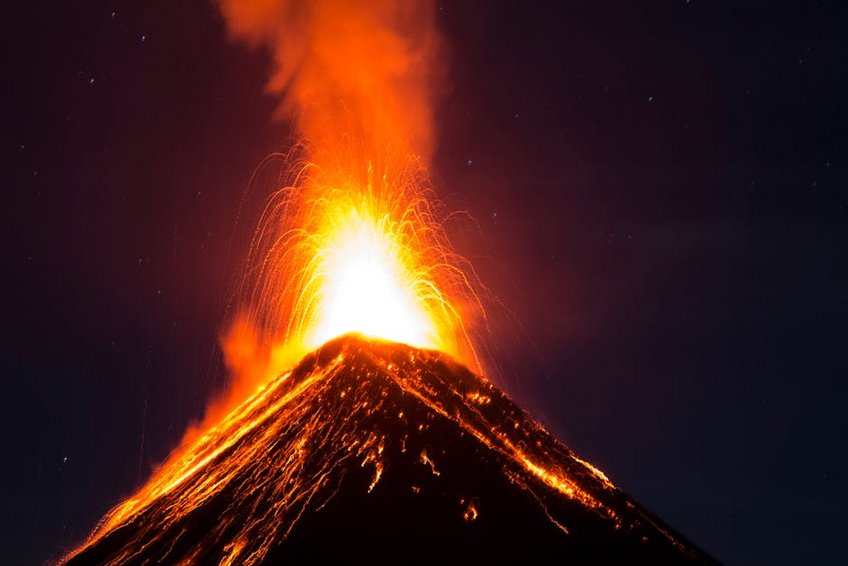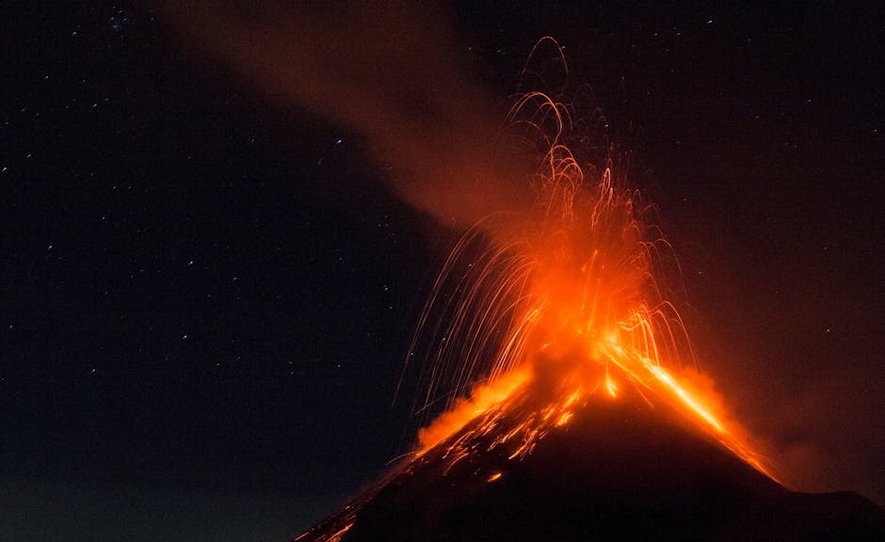Guatemala Antigua Volcano Hike: Conquer Central America’s Majestic Peaks
Embarking on a Guatemala Antigua volcano hike immerses you in dramatic landscapes where three towering volcanoes—Acatenango, Fuego, and Agua—dominate the horizon with their steep trails and occasional eruptions. This challenging adventure rewards determined hikers with unparalleled views of glowing lava flows, cloud forest ecosystems, and colonial Antigua nestled in the valley below. Our guide covers essential preparation, seasonal timing, and insider tips to maximize your safety and enjoyment while exploring these iconic Central American peaks.
Essential Volcano Hiking Information
Antigua Guatemala sits within a highland valley surrounded by volcanoes that reach elevations between 3,500 and 4,000 meters above sea level. The region’s volcanic activity creates unique hiking conditions where Fuego volcano frequently emits ash plumes and lava flows visible from Acatenango’s slopes. These geological wonders formed over millennia through tectonic plate movements beneath Guatemala’s Pacific Ring of Fire.
Volcano hiking here demands physical preparation since trails ascend rapidly through multiple climate zones from temperate forests to alpine environments. Acatenango’s summit stands at 3,976 meters where temperatures frequently drop below freezing overnight during dry season months. Always check current volcanic activity reports through INSIVUMEH before attempting any climbs near active craters.
Volcano Geography and Features
Understanding the volcanic trio helps plan which peaks match your fitness level and interests.
- Acatenango Volcano offers the most popular overnight hike featuring direct views of Fuego’s eruptions from base camps at 3,600 meters elevation.
- Fuego Volcano remains highly active with constant strombolian eruptions creating spectacular night photography opportunities from safe viewing areas on Acatenango’s slopes.
- Agua Volcano presents a steep day hike challenge reaching 3,760 meters with panoramic views across Antigua’s colonial architecture and surrounding villages.
- Budget option costs $50-80 covering basic guided day hikes with lunch, transportation, and entry fees while staying in hostels at $15-25 nightly.
- Mid-range option runs $100-150 including overnight camping with quality tents, sleeping bags, and better meals plus comfortable hotels at $40-70 per night.
- Luxury option reaches $200-250 featuring private guides, premium equipment, gourmet food, and boutique hotel stays with spa services for post-hike recovery.
- Layered clothing system including moisture-wicking base layers, insulated mid-layers, and waterproof outer shells for temperature ranges from 75°F to 20°F (24°C to -7°C).
- Sturdy hiking boots with ankle support broken in before your trip plus multiple wool socks for blister prevention during long descents.
- Headlamp with extra batteries for pre-dawn summit attempts and night photography sessions at base camps overlooking active eruptions.
- Guatemala Tourism Board
- Lonely Planet Guatemala Guide
Historical and Cultural Context
These volcanoes have shaped Guatemala’s history since Spanish colonization when Antigua served as the capital until earthquakes forced relocation in 1773. Local indigenous communities maintain spiritual connections to these mountains, considering them sacred entities within Mayan cosmology and traditional beliefs. Modern hiking routes often follow ancient paths used for centuries by local farmers and religious pilgrims.
Antigua’s UNESCO World Heritage status protects its Spanish Baroque architecture while volcano tourism supports local economies through guide services and equipment rentals. Respect cultural sites by staying on marked trails and following guide instructions regarding ceremonial areas occasionally encountered during ascents.
Physical Requirements and Difficulty Levels
Volcano hikes range from moderate day trips to extremely challenging overnight expeditions requiring excellent cardiovascular fitness. Acatenango’s ascent gains 1,500 meters elevation over 4-6 hours hiking through increasingly thin air above 3,000 meters altitude. Proper acclimatization spending 2-3 days in Antigua before attempting high climbs prevents altitude sickness symptoms.
Guides recommend training with weighted packs and stair climbing for several weeks before your trip to build necessary leg strength and endurance. Those with knee issues should bring trekking poles since descents prove particularly demanding on joints over volcanic scree slopes.

Alt: “acatenango-volcano-night-eruption-lava-flow-guatemala”
Planning Your Guatemala Antigua Volcano Hike
Organizing your volcano adventure requires careful consideration of seasons, fitness preparation, and budget allocation for essential guided tours. Dry season from November through April provides optimal hiking conditions with minimal rainfall and clearer views of volcanic activity across the mountain range. Budget approximately $50-150 USD per person for guided day hikes or $100-250 for overnight camping experiences including equipment and meals.
Research reputable tour operators in Antigua who provide certified guides, proper safety equipment, and adequate insurance coverage for high-altitude emergencies. Book accommodations in Antigua’s central district for convenient access to tour meeting points and post-hike recovery in comfortable hotels with hot showers.
Best Time to Visit for Volcano Hiking
Visit between December and February for peak hiking conditions with daytime temperatures around 65-75°F (18-24°C) and nighttime lows near 32-40°F (0-4°C) at high camps. These months experience virtually no rainfall, maximizing visibility for photography and reducing trail slippery conditions on steep volcanic ash sections. February typically offers the clearest skies for sunrise summit views before clouds develop by midday.
Shoulder seasons in November and March still provide good hiking weather with occasional afternoon showers that rarely disrupt well-planned itineraries. Avoid September and October when heavy rains create dangerous muddy trails and limited visibility, though fewer crowds can appeal to experienced hikers with proper gear.
Budget Planning and Costs
Your volcano hiking budget varies significantly based on tour inclusions and accommodation preferences.
Essential Preparation Checklist
Packing appropriately ensures comfort and safety during demanding high-altitude ascents through variable weather conditions.
Secure travel insurance covering high-altitude hiking emergencies and verify your policy includes helicopter evacuation from remote volcanic areas if needed. Arrange necessary documentation including passport validity extending six months beyond your departure date and digital copies stored separately from originals. Begin altitude acclimatization by spending at least 48 hours in Antigua before attempting major climbs above 3,000 meters elevation.
Top Attractions and Hiking Experiences
Beyond the iconic volcano climbs, Antigua and surrounding areas offer diverse attractions blending natural wonders with rich cultural heritage. The colonial city itself features beautifully preserved architecture, vibrant markets, and excellent restaurants serving traditional Guatemalan cuisine between hiking expeditions. Many visitors combine volcano adventures with day trips to Lake Atitlán or coffee plantation tours in the surrounding highlands.
Local guides enhance experiences by sharing geological insights about volcanic activity and pointing out unique flora and fauna along trails through cloud forests. Photography enthusiasts find endless opportunities capturing dramatic landscapes from lava flows against night skies to colorful traditional textiles in indigenous villages.
Must-See Volcano Highlights
Acatenango overnight hike remains the premier experience, allowing you to witness Fuego’s eruptions from specialized campsites with direct sightlines to the crater. The summit ascent begins around 3 AM to reach the top for sunrise views above cloud layers with visibility extending to Pacific Ocean on clear days. Guided tours typically include warm meals, camping equipment, and safety monitoring for this challenging but rewarding adventure.
Pacaya volcano offers easier day hikes suitable for most fitness levels where you can roast marshmallows over volcanic steam vents and observe recent lava flows. This active volcano frequently displays moderate activity with guided tours available from Antigua lasting 4-6 hours roundtrip including transportation.
Hidden Gems and Local Favorites
El Hato Eco-Farm provides a tranquil alternative to crowded trails with yoga sessions, organic meals, and stunning volcano views from their mountain retreat. This community-supported project offers day passes for hiking their private trails and interacting with rescued animals before returning to Antigua by arranged transportation.
San Miguel Escobar village at Agua volcano’s base offers authentic cultural experiences through community-led tours visiting local families and learning traditional weaving techniques. Few tourists discover this area, providing more intimate encounters with Guatemalan daily life beyond the main tourist circuit.
Photography and Specialty Tours
Specialized photography tours coordinate with volcanic activity patterns to maximize chances of capturing eruption sequences during optimal lighting conditions. These experiences typically involve extended stays at viewpoints during golden hour and blue hour when natural light enhances lava visibility against dark skies. Guides familiar with best angles help position tripods for composition including Antigua’s city lights in foregrounds.
Astronomy tours combine volcano hiking with stargazing sessions utilizing high-altitude clarity for observing southern hemisphere constellations rarely visible from northern latitudes. These specialized outings require booking well in advance through operators offering telescope equipment and astronomical guidance.
Practical Travel Information
Navigating Guatemala requires understanding transportation options, accommodation varieties, and essential services available throughout your volcano hiking itinerary. Antigua serves as the perfect base with its compact layout allowing easy walking between hotels, restaurants, and tour operators concentrated within the historic center. Spanish language skills prove helpful though most tourism professionals speak adequate English for basic communication.
Currency exchange facilities and ATMs abound in Antigua, though carrying some cash remains essential for smaller vendors and transportation outside the city. Guatemala uses both Quetzales and US dollars interchangeably in tourist areas, with current exchange rates around 7.5 Qtz to 1 USD.
| Accommodation Type | Features and Location | Price Range (USD) |
|---|---|---|
| Hostels | Dormitory beds, shared kitchens, social atmosphere in central Antigua | $10-25 per night |
| Mid-Range Hotels | Private rooms with en-suite bathrooms, breakfast included, walking distance to attractions | $40-80 per night |
| Boutique Hotels | Colonial architecture, courtyard gardens, spa services, concierge assistance | $90-200 per night |
| Eco-Lodges | Mountain locations with volcano views, sustainable practices, guided nature activities | $60-120 per night |


